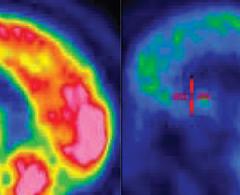
This Article From Issue
March-April 2014
Volume 102, Number 2
Page 84
DOI: 10.1511/2014.107.84
To the Editors:
The question of how best to preserve computer data has concerned all of us, and the January–February Spotlight “A Safety Net for Scientific Data,” by Katie L. Burke, shows what can happen when important data are lost. I started computing in the early 1960s with an IBM 1620 and punch cards, and I have used many different PCs since. Over the years, I have lost data in several ways.
Computers, operating systems, software, and storage devices all change rapidly, and it can be irksome or impossible to translate old data to new formats.
Problems occur with bad filing systems and with no clear understanding of how to set up good ones. Operating systems offer multiple paths to the same files, and these paths are not always consistent. I have 23,000 documents in 2,155 folders and 55,000 images in 570 folders on my PC. Deciding where to put a file or finding it afterward can be daunting. Search functions are useful, but only if you know a word or phrase that appears in only a few files. Files that are linked to other files offer their own problems.
To make matters worse, files can be overwritten or deleted, sometimes through careless mistakes or through software that easily overwrites files. Software can change data, sometimes “off screen” and unseen. The metadata associated with JPEG and TIFF image files are useful for holding data and searching for them later. But metadata are not preserved by all software. E-mail and any data in it are not always portable.
The “project” files for graphics, computer-aided design (CAD), or movie-making programs are often deleted and only the results retained. This frees up disk space and tends to keep filing systems orderly. But frequently, you cannot go back and reproduce your results. You simply have to start anew.
Data storage devices have a finite life span. Magnetic fields, sunlight, and mechanical failures all can alter stored data or make them unreadable.
Although we can expect a data archiving firm to be able to hold data for 25 or 30 years, can we expect hundreds or thousands of years? Perhaps buying data storage space will be like buying a cemetery plot, which comes with a promise of immortality.
Ronald S. Csuha
New York, NY

American Scientist Comments and Discussion
To discuss our articles or comment on them, please share them and tag American Scientist on social media platforms. Here are links to our profiles on Twitter, Facebook, and LinkedIn.
If we re-share your post, we will moderate comments/discussion following our comments policy.